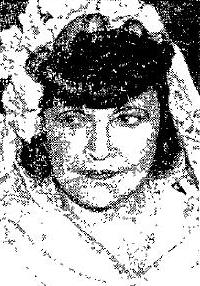You probably never heard of Fannie Ward, known as the Eternal Flapper, best remembered for her role in Cecil B. DeMille’s
The Cheat 1915, or of Tom Lyle Williams, who founded Maybel Laboratories and introduced a new eye beautifier, called Lash Brow Ine, in 1915. Tom Lyle was 19, Fannie, was 43, though she appeared much younger than her age. You can see how young she looks in this 1918 Maybelline Ad. It was said, that her personality is what gave her that girlish look.
Fannie, was a front runner for her generation, and generations to come, with her obsession to look young and beautiful as she aged. She used secret facial treatments, and opened a Paris beauty shop called “The Fountain of Youth” in 1926, though in 1925 she'd been talking about opening a salon in New York to compete with Helena Rubinstein, and Elizabeth Arden. It never happened.
Fannie's
ageless appearance helped her become a celebrity. An obituary described her as "an actress who never quite reached the top in her profession ... [and who] tirelessly devoted herself to appearing perpetually youthful, an act that made her famous".[2]
Tom Lyle Williams, renamed Lash Brow Ine to Maybelline in 1916 in honor
of his sister Mabel Williams who gave him the idea for mascara. Maybelline
ads continued to feature the most beautiful stars in Hollywood. Maybelline
is still the number one mascara in the world 104 years later.

From the Logansport Journal, May 25, 1895
Fannie Ward Lewis with daughter Dorothe Mabel, Logansport Reporter, June 2, 1908
Burr McIntosh Monthly, July 1907 issue.
Fannie Ward and Jack Dean make their film debut in The Marriage of Kitty. Ad from the Warren Evening Times, September 18, 1915.
The Cheat
Fannie Ward made her film debut earlier in 1915 for Paramount in a film titled The Marriage of Kitty. Jack Dean made his first movie appearance in this same title. They left their lasting legacy in Cecil B. De Mille’s The Cheat, released by Paramount about two weeks prior to their marriage.

Fannie Ward and Jack Dean in The Cheat
T

Sessue Hayakawa and Fannie Ward in The Cheat

Sessue Hayakawa and Fannie Ward in The Cheat
Later Years
Fannie Ward and Jack Dean remained active for Paramount through the remainder of the 1910s and Fannie kept busy with sporadic sojourns into vaudeville throughout the 1920s.

The offending cartoon, by Sem
.

Fannie Ward photo used with A.P. obituary published nationwide January 28, 1952
.
The Cheat starring Fannie Ward, Sessue Hayakawa and Jack Dean. It can be viewed online on
YouTube or the
Internet Archive. It is also available on
this DVD
from Kino which also includes Leatrice Joy in another early DeMille title,
Manslaughter (1922).
Fannie Ward, also known as
Fanny Ward[1] (born
Fannie Buchanan; February 22, 1872 – January 27, 1952) was an American actress of stage and screen, known for comedic roles as well as
The Cheat, a sexually-charged 1915 silent film directed by
Cecil B. DeMille.
On January 25, 1952, Ward was found unconscious in her
Park Avenue apartment after a
stroke. She never regained consciousness and died two days later. She was 79 years old.





































